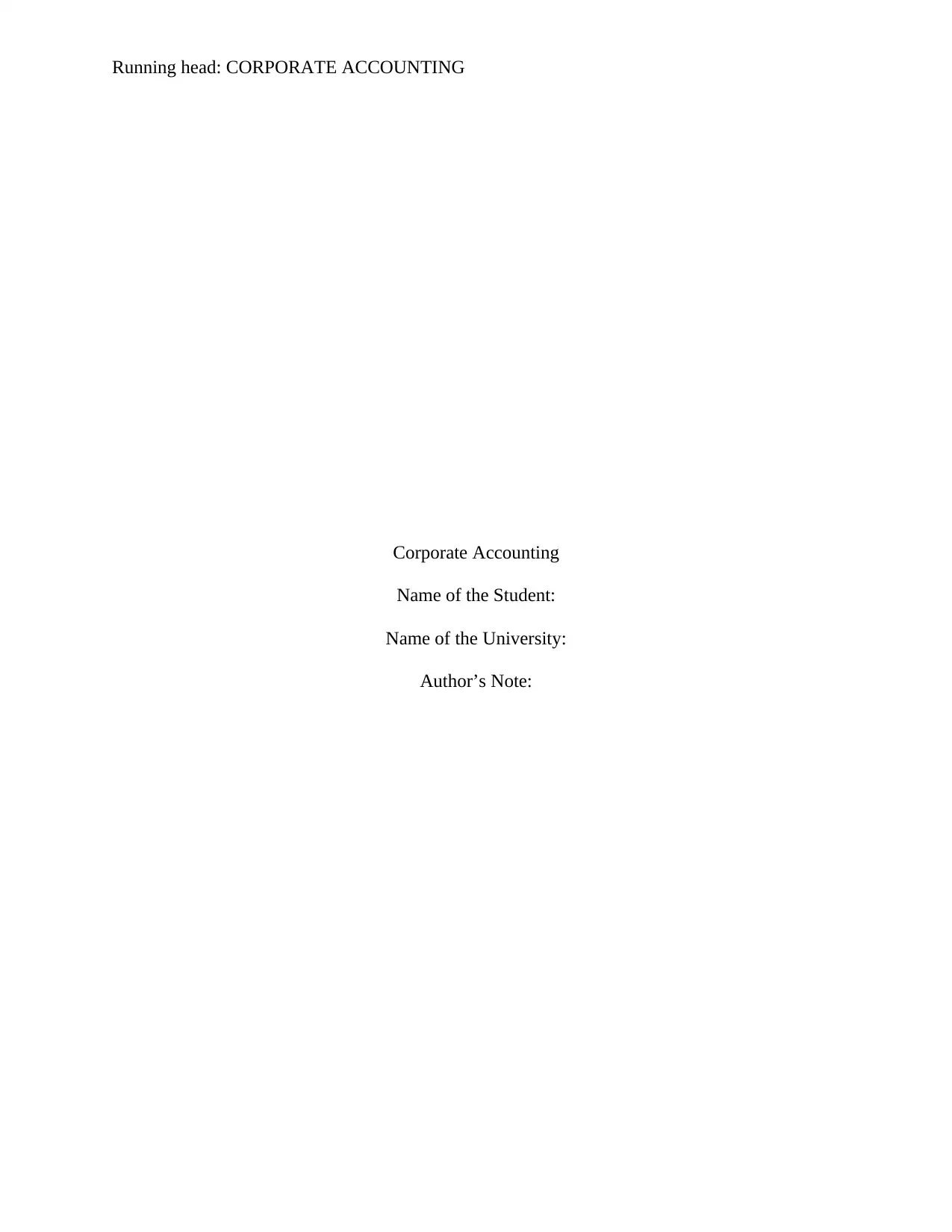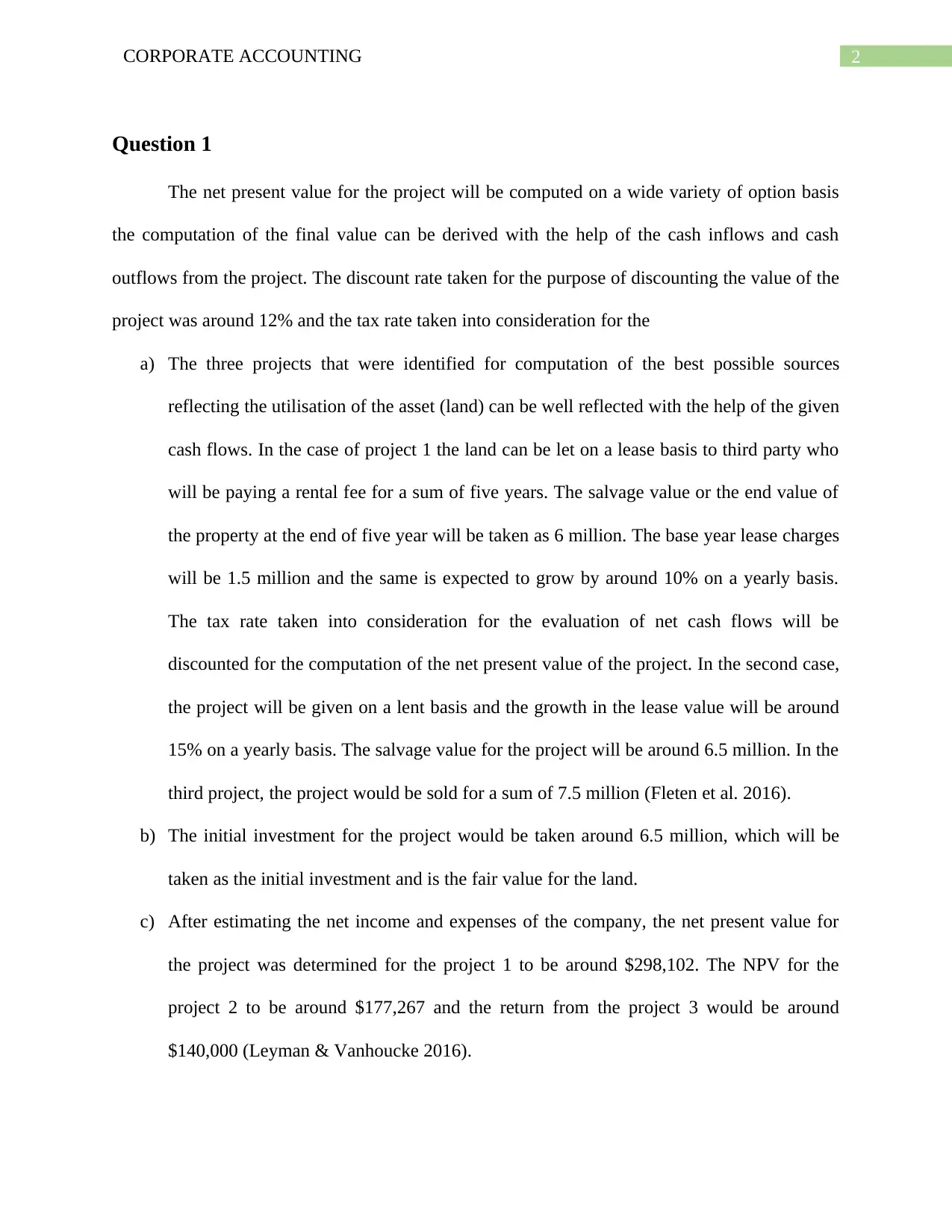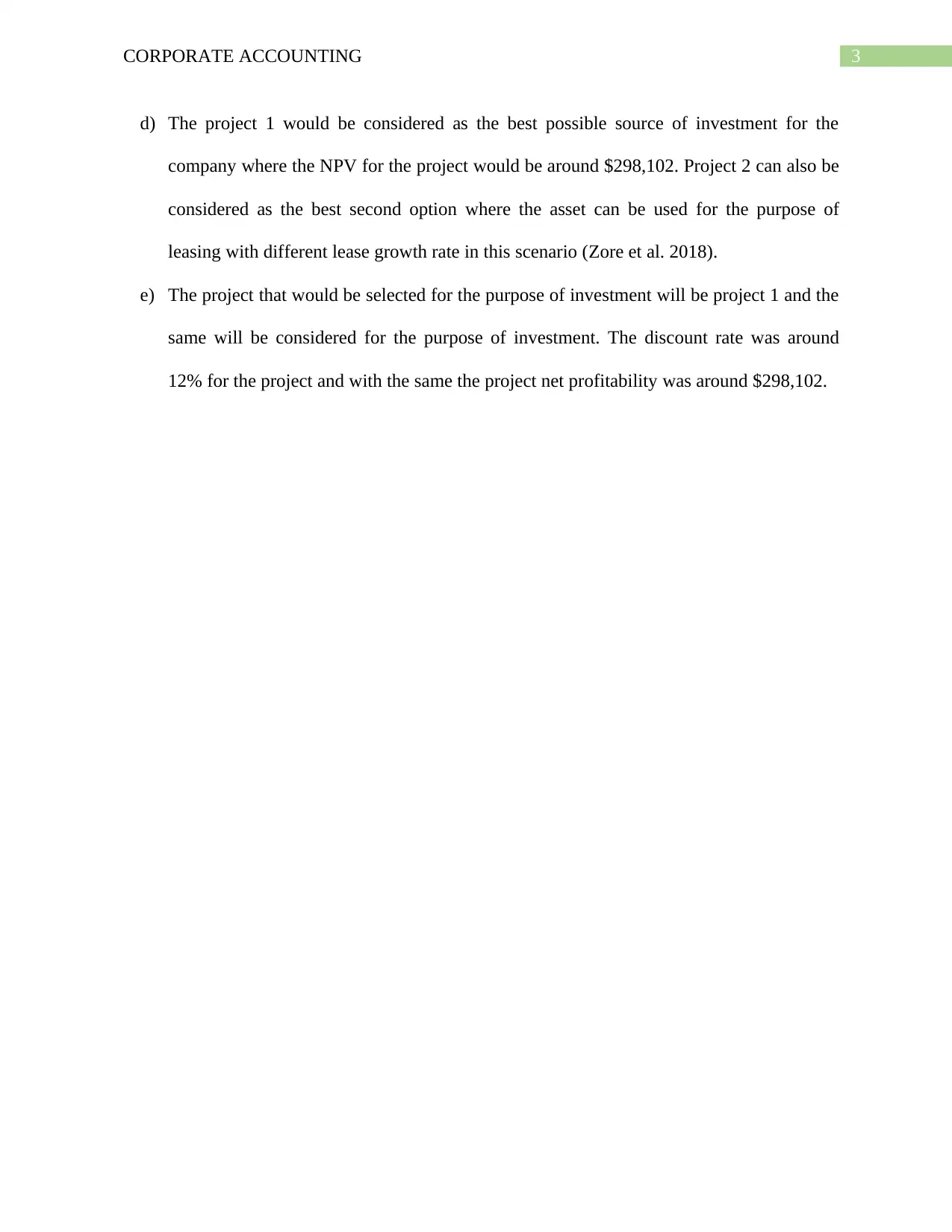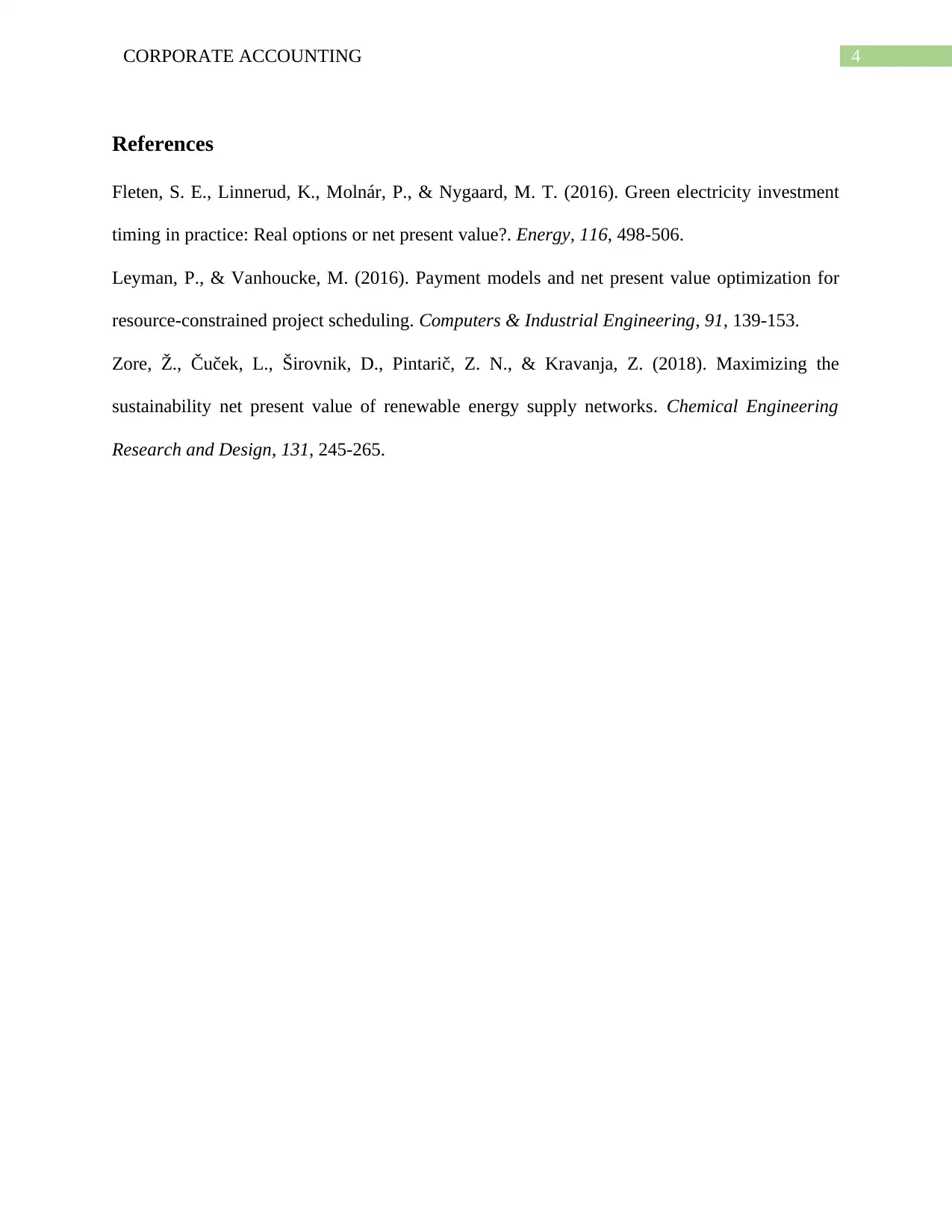AF208 Corporate Accounting Assignment: Project NPV and Analysis
VerifiedAdded on 2022/12/05
|5
|664
|246
Homework Assignment
AI Summary
This document presents a comprehensive solution to a corporate accounting assignment, specifically addressing the valuation of investment projects. The assignment involves analyzing three potential projects for a piece of inherited land, considering factors like lease income, salvage values, and discount rates. The solution includes detailed calculations of Net Present Value (NPV) for each project, incorporating cash inflows and outflows, as well as a tax rate of 30% and a discount rate of 12%. The analysis identifies the most profitable project based on its NPV, offering insights into project selection and financial decision-making. The solution also includes references to support the analysis and conclusions drawn. The assignment adheres to the instructions provided, including word limits and referencing requirements.
1 out of 5












![[object Object]](/_next/static/media/star-bottom.7253800d.svg)